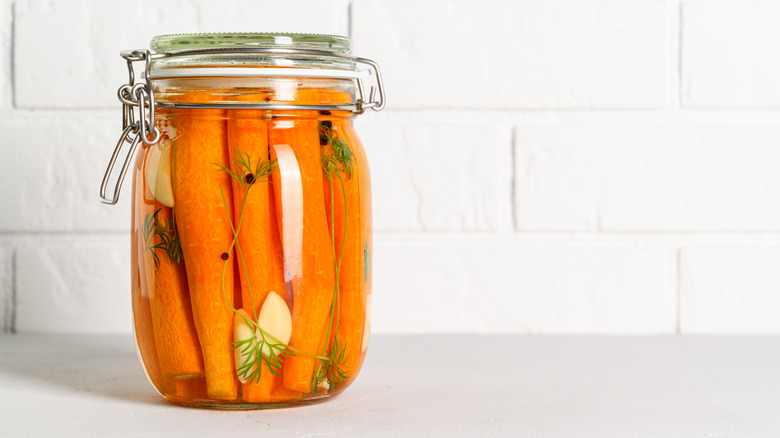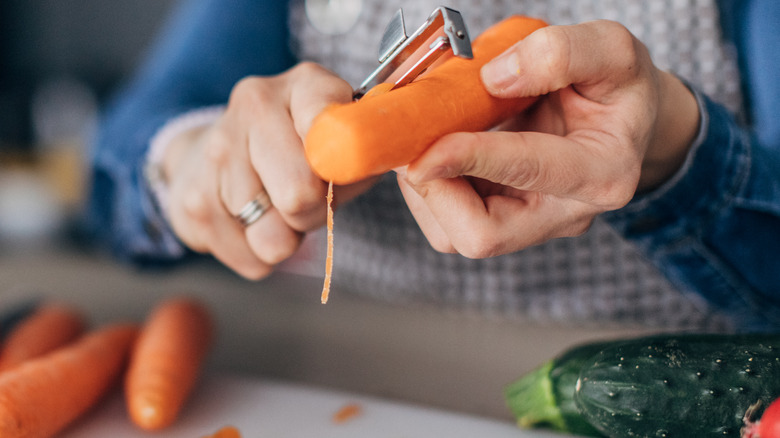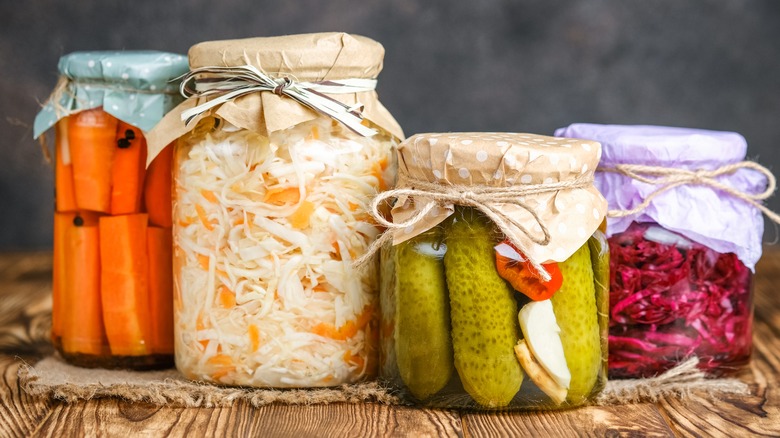Why You Should Peel Your Carrots Before Pickling Them This Summer
Pickling carrots in vinegary brine is not only delicious, but it also slows the growth of food spoilage bacteria and is an excellent way to preserve these high-fiber veggies. Quick pickling carrots is an especially delightful and helpful kitchen practice in the summer when the produce is quality and fresh.
If you've found yourself with a big bag of the orange root vegetables in the fridge, have brushed up on all the tips and tricks to making the perfect pickles, and are ready to get pickling, there's one step you can't afford to skip: peeling your carrots. While it's tempting to take a shortcut and get straight to cutting up your carrots, it's important to peel your carrots so they can evenly absorb the vinegar without the tough skin exterior.
If you leave the skin on your carrots, your pickles will take longer to soak up the brine, the salty, acidic liquid which preserves the veggie and gives them their tangy flavor and soft, yet crisp texture. Leaving the skin on will result in a tougher bite to the outside of your pickled carrot.
Additionally, if you don't peel your carrots prior to pickling them, there can also be pesky dirt and residue that hangs around in the crevices of the carrot peel. To keep your pickles free from contaminants, it's best to remove the peel to avoid transferring dirt into your pickling solution.
How to make the most flavorful pickled carrots
To pickle your carrots, first wash them off and peel them completely. Next, using a sharp chef's knife, cut your peeled carrots in quarters, then into four-inch sticks. At this point, you can also opt for whatever carrot cuts suit you, including disks or shreds. Place your cut carrots in clean glass mason jars, to prepare them to be filled with brine.
Make your pickling brine by combining and heating white wine vinegar — white vinegar or apple cider vinegar can be substituted here — water, kosher salt, and spices in a medium saucepan. Add some peppercorns, mustard seeds, dill, and even whole allspice berries to the liquid solution to meet your desired taste. Once the brining mixture reaches a boil, remove it from the heat, cool for a few minutes then fill mason jars with the brine.
Completely submerge your carrots in the liquid, then let the brine cool before topping the jars with their lids. Store your jars of pickled carrots in the fridge for at least 24-48 hours — though for best flavor and texture, wait about a week before enjoying your pickled treats. They are good for up to two months, past which pickled carrots may start to become overly soft or limp.
Add your homemade pickles to a variety of dishes
Pickled carrot sticks are great on charcuterie boards for an acidic bite to compliment a variety of rich, creamy cheeses. You can also simply enjoy them as a zingy snack eaten right out of the jar, or include them as a side to seriously up-level any lunchtime sandwich. Pickled carrots also make for flavorful mix-ins for salads, and can serve as a delicious and impressive alternative to your typical cucumber dill pickles on burgers at your summertime grill out.
To infuse some spicy heat into your pickled carrots, slice up jalapeños, remove the seeds, and add them into your jar with the carrots before you add the brining liquid. You can also add garlic, sliced onions, or ginger for a depth of savory or spiced flavor. No matter what inventive takes you choose on your pickling adventures, just don't forget to peel your carrots as the first step for the best flavor and snappy bite.


